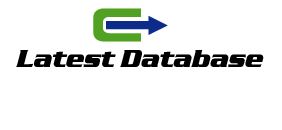Definition: Identify and define your target audience based on demographics, interests, behavior, and pain points.
Importance: Understanding your audience helps tailor marketing efforts and messages to resonate with their needs and preferences.
Lead Generation Channels:
Digital Channels: Utilize online platforms such as websites, search engines (SEO), social media, email marketing, and paid advertising (PPC) to attract potential leads.
Offline Channels: Include traditional methods like direct mail, events, networking, and print advertising, depending on your target audience’s preferences.
Content Strategy:
Content Types: Create valuable content such as blogs, whitepapers, eBooks, webinars, case studies, and videos that address audience pain points and provide solutions.
Content Distribution: Distribute content through appropriate channels to reach and engage with your target audience effectively.
Lead Capture and Conversion:
Lead Magnets: Offer incentives like gated content (e.g., downloadable guides) in exchange for contact information to capture leads.
Forms and Landing Pages: Design optimized forms and landing pages with clear calls-to-action (CTAs) to facilitate lead capture and conversion.
Lead Nurturing:
Email Marketing: Develop automated email campaigns to nurture leads with relevant content, personalized messaging, and offers based on their behavior and interests.
Segmentation: Segment leads into categories based on their engagement level and interests to deliver targeted communication.
Lead Scoring and Qualification:
Lead Scoring: Assign scores to leads Phone Number Lists based on their interactions with your brand, indicating their readiness to make a purchase.
Qualification Criteria: Use criteria like BANT (Budget, Authority, Need, Timeline) to assess if leads meet your ideal customer profile and are worth pursuing by sales teams.
CRM Integration and Sales Handoff:
CRM System: Integrate with Customer Relationship Management (CRM) software to manage and track leads through the sales pipeline.
Sales Alignment: Ensure smooth handoff of qualified leads to sales teams with necessary information to facilitate personalized follow-up and closing.
Measurement and Optimization:

KPIs: Track key performance indicators (KPIs) such as conversion rates, cost per lead, and ROI to measure the effectiveness of lead generation efforts.
Continuous Improvement: Analyze data insights to identify strengths, weaknesses, and areas for optimization in your lead generation model.
Benefits of a Lead Generation Model
Scalability: Allows businesses to scale lead generation efforts according to growth objectives and market demands.
Efficiency: Streamlines the lead acquisition process, optimizes resource allocation, and enhances overall marketing and sales productivity.
Predictability: Provides a structured framework for predicting and forecasting lead generation outcomes and revenue generation.
By implementing and continuously refining a lead generation model tailored to your business goals and target audience, you can maximize lead acquisition, nurture relationships effectively, and drive sustainable business growth.


